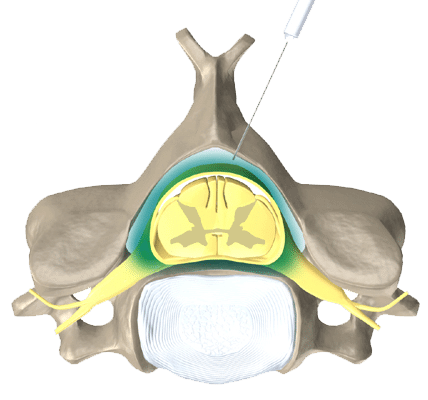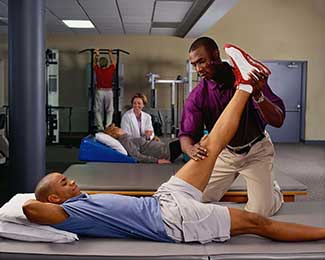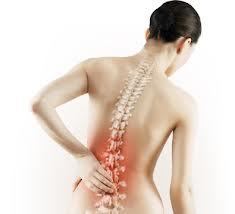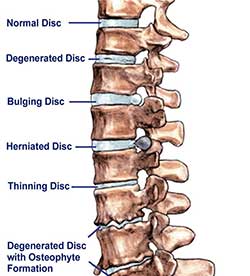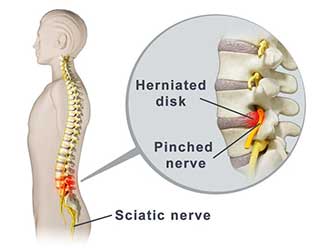Degenerative Disc Disease
What is it?
Degenerative disc disease is the breakdown of the discs that reside between the vertebrae in your spine. Although it sounds like it is a condition that will get progressively worse, the name is a bit of a misnomer. In fact, it is not a disease caused by some outside infection, and the degeneration is usually adapted to well as the body becomes accustomed to the disc changes. Essentially, the discs lose height by losing the fluid within them that enables them to cushion the spine. With the loss of water, the discs are more prone to crack and break, and this can press on nerve roots. In addition, the loss of height can also cause nerve roots and the spinal cord to suffer compression. Degenerative disc disease is a normal part of aging or overuse of the back.
Who gets it?
This condition is most commonly associated with aging. As the body progresses through life, the fluid in the discs eventually wears away, and the signs of degenerative disc disease are more apt to manifest. However, the elderly are not the only sufferers. Those who lift heavy objects frequently, such as factory workers, healthcare workers, or construction workers, are more at risk for this condition. The stress from the activity can often result in disc degeneration. Likewise, those who carry extra weight are also at high risk for developing degenerative discs. Finally, smokers are at greater risk for the condition, and this may be due to the vascular problems that occur with nicotine use. Without these vital small vessels to supply the discs and keep them healthy, they begin to deteriorate and cause pain.
What kind of pain results?
Some patients can have extensive degenerative disc disease and not suffer any pain. Two patients may have the same pattern of disc deterioration and experience completely opposite symptoms. For this reason, the symptoms of degenerative disc disease are quite variable. You may experience muscle sprains and strains around the disc that has degenerated due to the decreased space between the vertebrae. The early process of degeneration of the discs may cause some slight instability of the spine, leading to episodes of muscle spasms. That is why people in their 40’s and 50’s may “throw out” their back, but older patients, whose muscles have adapted to the degenerative process do not have these episodes as much.
Next, degenerative disc disease can contribute to the inflammation of the joints in the back of the spine. As the discs lose height, the joints in the back of the spine become inflamed and painful. Pain from these joints is usually felt with twisting and bending backwards (looking up in the case of the neck). Those with arthritis of the joints in the lower back feel lower back pain when they stand or walk (especially upstairs) for a prolonged period.
Degenerative disc disease result in less space for the nerves to exit the spinal canal, which can leading to “pinched nerves” felt as a pain in the back radiates (“shoots”) down the extremities (in the lower leg: Sciatica) and can also lead to numbness, tingling, and possibly weakness. More serious degenerative disc conditions include disc protrusion and disc extrusions. Disc protrusions occur when the fibrous ring around a disc weakens, forming an out pouching of the disc that can press directly on nerves, causing severe pain. If the gelatin center of the disc leaks out through the fibrous outer ring of the disc, it is called a disc extrusion. This condition can be extremely painful because not only is there mechanical pressure of the disc contents on the nerve, but also a chemical inflammation, from the acidic contents of the disc. Weakness of an extremity is more likely in the case of a disc extrusion and could require surgery if the weakness worsens or does not improve with strengthening exercises.
Finally, spinal stenosis is a condition that results from advanced degenerative disc disease. It occurs when disc bulges and enlarged joints narrow the main spinal canal. People with this condition feel back pain as well as leg pain and cramping when walking. The back and leg pain is often relieved with leaning forward on a shopping cart or walker.
Treatments
Fortunately, Pain Medicine physicians have a great deal of treatments that can treat the symptoms of this condition. Medication is vital in controlling the pain, and anti-inflammatory medications are often paired with antidepressants and anti-seizure drugs to effectively eliminate discomfort. Injections are standard practice for degenerative disc disease, and this includes trigger point injections for muscular pain, epidural injections for pain due to pinched nerves, and nerve blocks to diagnose and treat arthritis of the spine. Steroids are injected to treat inflammation where it occurs. Steroids decrease soft tissue inflammation and quiets nerves, thereby decreasing the pain. There are other treatment options for pain caused by degenerative disc disease, including, radiofrequency lesioning that can be done to reduce the pain from spinal arthritis, discography to identify a painful disc, discectomies done through a needle, etc.
Of course, treatment of degenerative disc disease is a multidisciplinary endeavor. Physical therapists are vital in assisting the patient to retrain their muscles to accommodate the changes to the disc. Chiropractors are also integral in adjusting the spine for the misalignments that occur when a disc is compressed. In some cases, a spinal surgeon may be necessary to remove a portion of a protruded disc, fuse vertebrae or perform other, more aggressive treatments to control pain. Surgery is considered the last resort, when more conservative measures, including physical therapy, medications and spinal injections, have not provided satisfactory relief. With the help of your Pain Management team, you will be able to overcome this common condition.

